A strip of land lies between the eight states of Northeast India and the rest of the Indian Republic. Siliguri sandwiched between Bangladesh, Nepal, and Bhutan is the third largest city in West Bengal. A roundabout in the city's heart is called ‘Darjeeling More’, that leads to the Darjeeling hills. Here stands the statue of ‘Maila Bajae’, his shiny marble bespectacled eyes covered in dust, the stories of his life fading away.
On posting a picture of my latest read ‘The Red Lion of the Hills’on Instagram, my Daju said, “Baini, timilai thaha cha usle time travel garthyo harey bhanthyo”. (Sister, did you know they used to say that he time travelled?) On learning this interesting piece of information, intrigued I began to read the book.
‘The Red Lion of the Hills’ is the biography of Ratanlal Brahmin penned by his granddaughter Preeti Brahmin.
Perusing through the pages, I find a daredevil anecdote archived by the author. It narrates Maila Bajae’s encounter with a couple of British Soldiers en route from Darjeeling Bazaar to Lebong. The two Tommies (British soldiers) had hired a taxi but refused to pay the agreed fare on arrival at Lebong and beat up the driver instead. Witnessing the mistreatment of a fellow Darjeelingey, Maila Bajae got behind the wheel in a blind rage and accidentally ran over the two bullies who got in the way. The author further describes his quick escape toward his home in Singamari, from where he drove down the dangerous untraversed stretch full of boulders and landslides from Happy Valley to Rajbari. He then arrived on the asphalt Hill Cart Road at Kak Jhora and proceeded towards Jorebungalow. A deployment awaited him at Darjeeling Bazaar, but he arrived from the opposite end of Lebong, much to the bewilderment of the authorities.
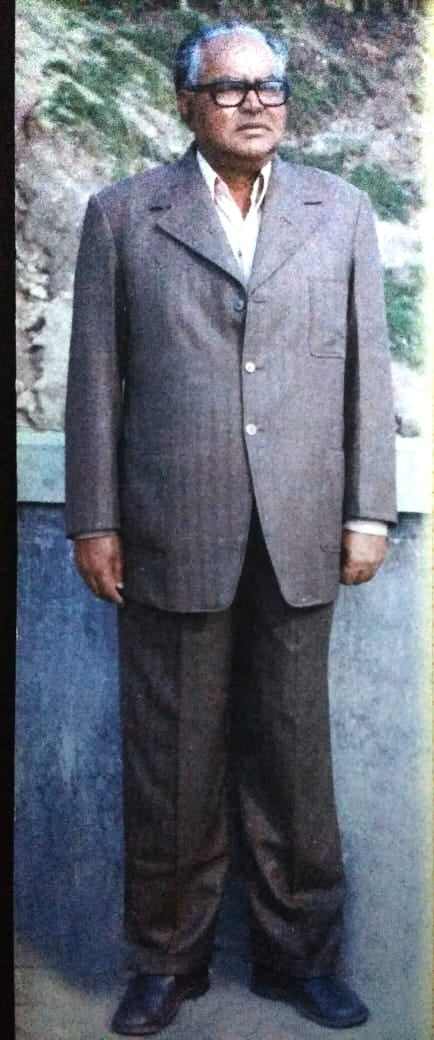
Courtesy: Preeti Brahmin
This is the legend of Sri Ratanlal Brahmin, a towering figure in the socio-political landscape of Darjeeling and the Indian Nepali community in the 20th century.
He is remembered as the first Communist leader from the Darjeeling Hills. At the same time, his reputation for ensuring social justice to economically marginalized groups by taking from the economically stronger strata also earned him the epithet ‘Robinhood’ of the region.
Lending a Helping Hand
Ratanlal Brahmin was born in Bhaktey Busty, Darjeeling, in 1900. Having lost his parents at a tender age, he spent the formative years of his childhood learning to earn a livelihood and to be self-sufficient. His biography maps the trajectory of his life journey. He tried several jobs until he settled as a taxi operator at the Lebong Taxi Syndicate.
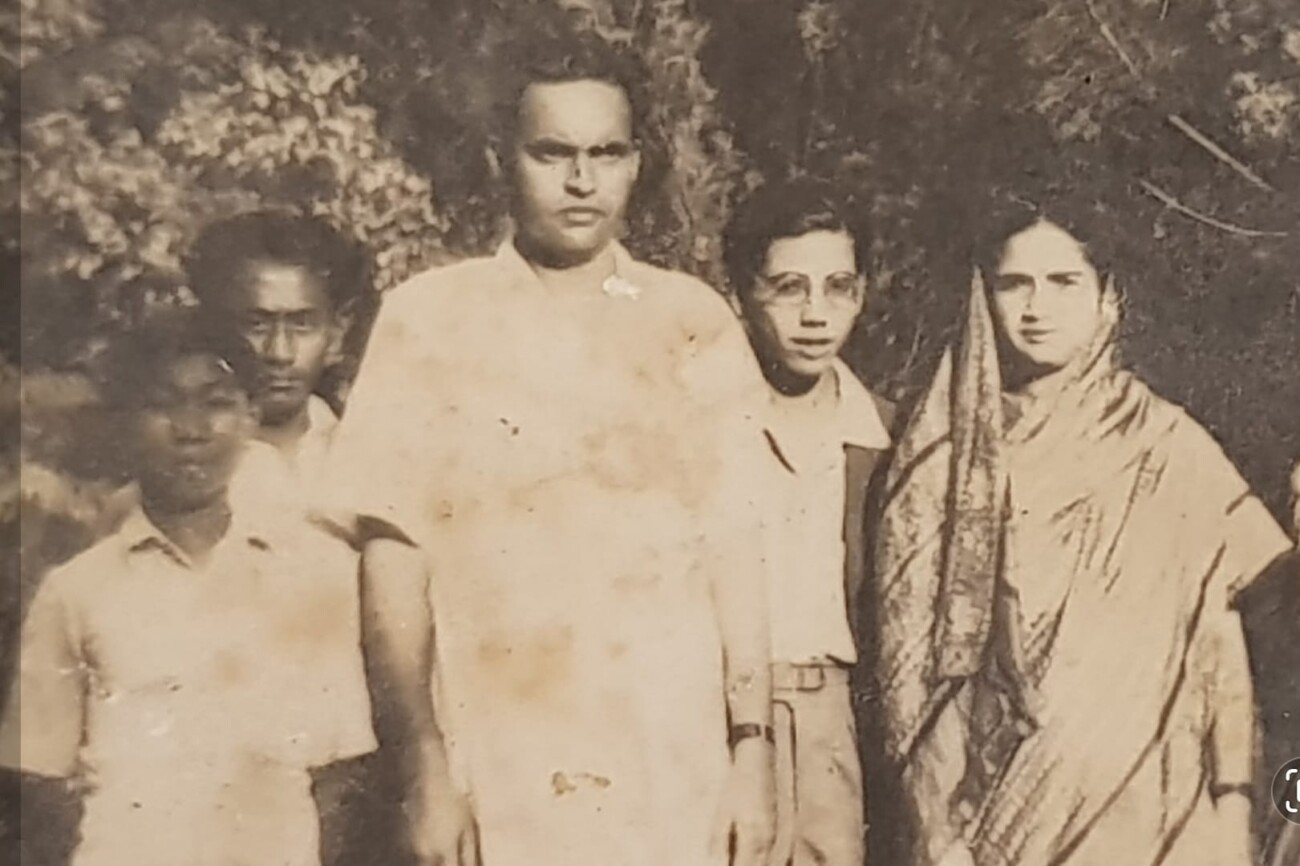
Darjeeling in the 20th century, was a ‘romantic’ sanatorium built by the toil of the native communities. All natives were mere subjects to the imperial power’s brutality, recruited as cheap labour to build a thriving empire. It was during such times that Maila Bajae’s name began quickly spreading across Darjeeling for his incredulous abilities to help the downtrodden labourers and hold the British accountable.
Abandoned dead bodies of migrant workers were often discovered lying in deplorable conditions throughout Darjeeling town. Disturbed by the abject indignity of fellow humans, Ratanlal Brahmin and his group of friends initiated respectful funerals for the many nameless dead bodies of migrants in Darjeeling. The group included Dhanbir Mukhia, Harshadwaj Lama, Jitbahadur Khadka, Lalu Pradhan, Man Bahadur Mukhia, and others who went on to form the ‘Gorkha Dukha Niwarak Sammelan’ (GDNS) in 1932 (Biswas,2011).
Today, GDNS stands out as one of the first civil society initiatives by the people of Darjeeling. The organization continues to preserve and support the town's unique cultural and social space, in interventions that range from theatre to kavi sammelans (gathering of poets) to conducting community marriages, and funerals.
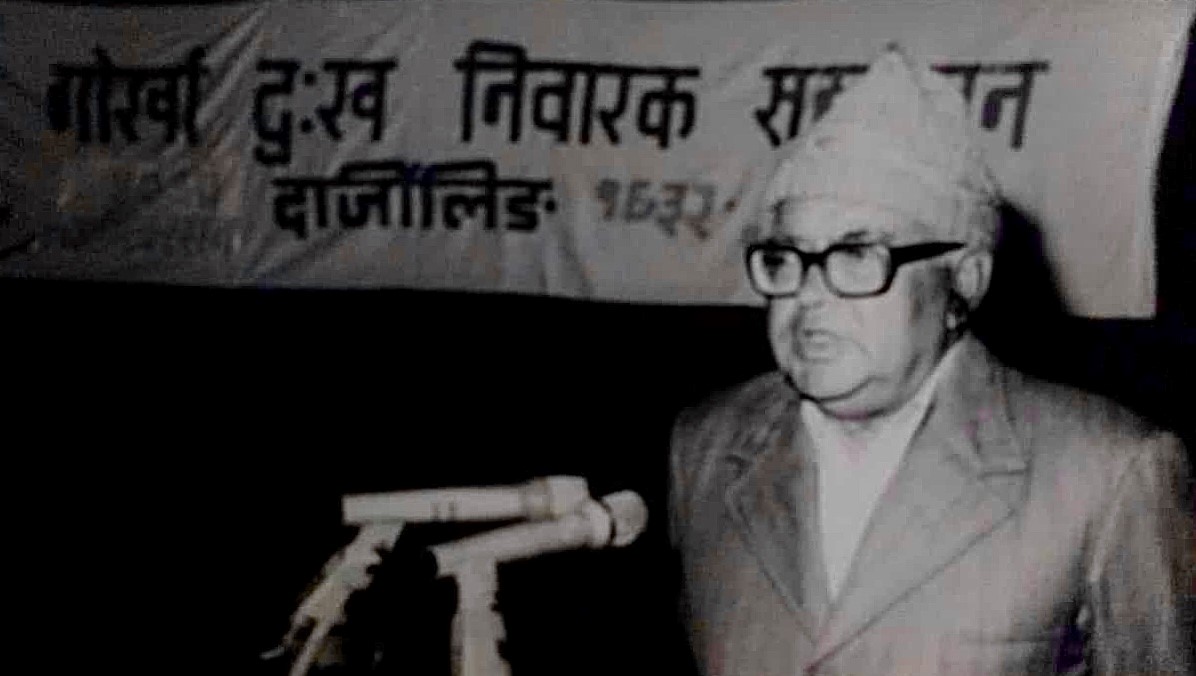
However, there was a gradual awakening of political consciousness. In 1907, a group of Darjeeling’s emerging intelligentsia formed the ‘Hillmen’s Association’. During the 1940s, the air in colonized landscapes was filled with a promise of freedom and democracy.
The year 1943 was a shocking testament of British imperialism’s brutality. A famine-stricken Bengal was left to fend for itself as World War II raged on. The epidemic had plunged Bengal into chaos and helplessness, around 3 million people died of starvation. Darjeeling, then administered from Kolkata, quickly caught the winds of turmoil blowing from the south. Panic hoarding of rations, price inflation, and corrupt market practices gained ground.Maila Bajae with a group of concerned Darjeeling youth campaigned to ensure the market stayed fair and regulated. The group even issued a public poster smeared in blood with the declaration, “As long as food stocks last, merchants should disburse goods at reasonable rates”(Brahmin, 2021). Extraordinarily, not one person is said to have died directly due to starvation in Darjeeling during the famine (Biswas, 2011).
Rising in Politics
Ratanlal Brahmin had never received a formal education but he was a curious learner and critical thinker. His memoir mentions his brief apprenticeship with a shaman, being fascinated by shamanism. He taught himself to read and write, and the literary works of philosophers such as Rahul Sankrityayan and Dharnidhar Koirala were foundational to his ideas of social scrutiny and reform. The author also recounts his respect for the teachings of Buddha and Christ whom he perceived not as Gods but as wise men. He was also an active member of the ‘Arya Samaj’, a Hindu reform movement of the 18th century.
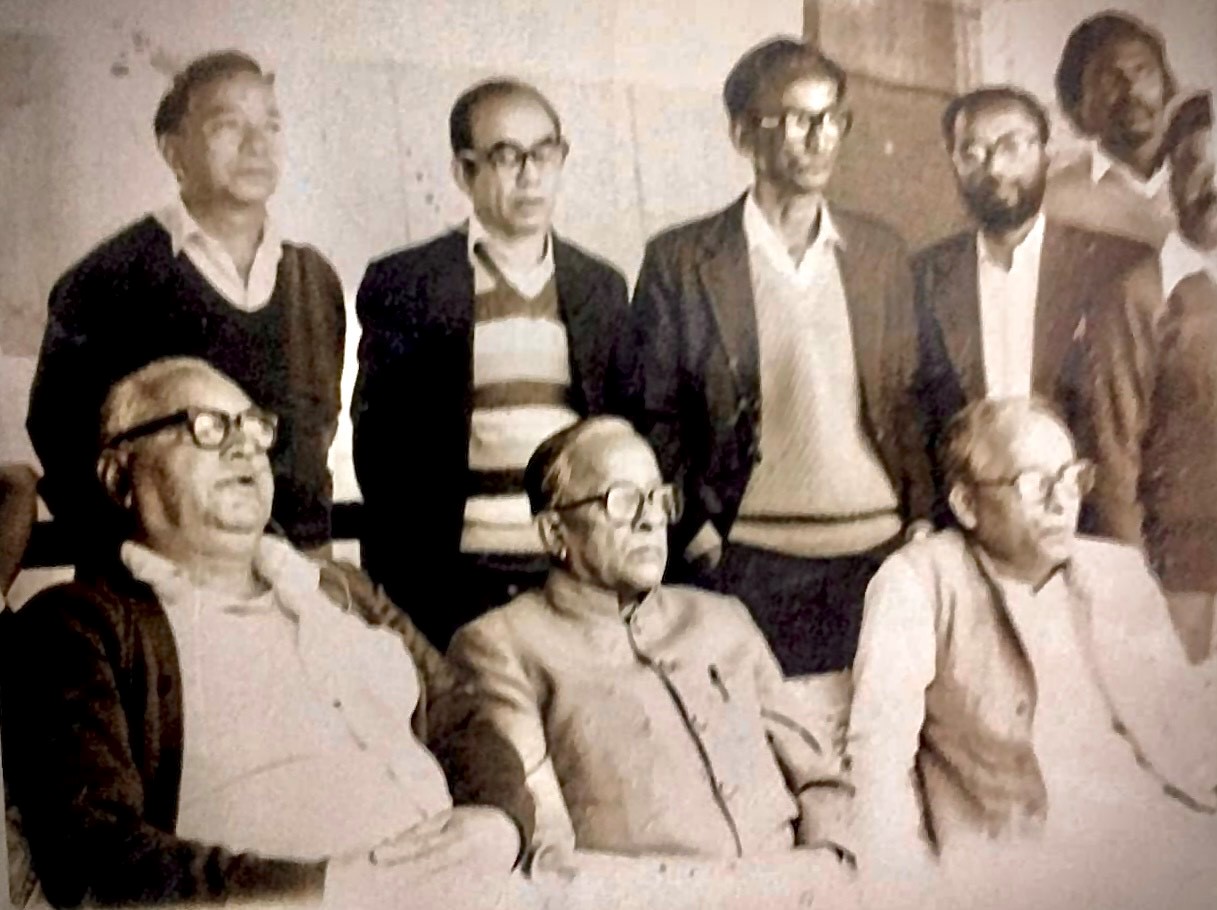
Courtesy: Preeti Brahmin
The author writes, “his innate rationalism and practical sense of social responsibility had shaken the core of the practices he was born into”.But one ideology resonated in the lion heart of Ratanlal Brahmin that he would continue dedicating his life to- Marxism.
The ‘Communist Party of India’ was formed on 26th December 1925, at the first party conference in Kanpur. Their red flags emblazoned with 'the sickle and hoe' motif and the belief of working-class solidarity was gaining popularity in Bengal, especially during the Great War period. In the 1940s, a young Bengali comrade Sushil Chatterji sought to light the red flames of Communism in verdant Darjeeling. Soon, Sri Ratanlal Brahmin was indoctrinated into Marxism, becoming the first red cadre of the Darjeeling Hills. In 1943, the ‘Communist Party of Darjeeling’ was formed by Ratanlal Brahmin, Sushil Chatterjee, Satyendranath Majumdar, and Dr. Sachin Das Gupta, Bhadrabahadur Hamal, and Ganeshlal Subba (Roy, 2012 ). In the same year, the ‘Akhil Bharatiya Gorkha League’ (ABGL) was started by Damber Singh Gurung.Ratanlal Brahmin is said to have been so influential in the sphere of social movements in Darjeeling that despite being a member of the ‘Communist Party of India’, he was appointed the Vice-President of the ‘Gorkha League’ from 1944 to 1945.
Unionising Darjeeling
Maila Bajae and the ‘Communist Party of India’s’ role in spearheading the unions as voices of the oppressed workers in Darjeeling was monumental. Described intricately in his biography, he worked actively to consolidate the taxi drivers’ union, the student’s federation, the day laborer’s union, the women’s association, and the farmer’s association. Interestingly, the duo of Ratanlal Brahmin and Tenzing Norgay whose statues stand together in ‘Darjeeling More’, was instrumental in the formation of the‘Rickshawaal-Dandiwaal Union’. For the first time, the most downtrodden people in Darjeeling found a platform to air their grievances.
The Indian subcontinent gradually democratized, but labourers belonging to the tea plantations of Darjeeling continued to face exploitation. Exploitative practices such as ‘hatta bahar’ where tea plantation operators could arbitrarily evict workers were common along with deplorable wages and living conditions. Under such conditions, the ‘Darjeeling District Tea Garden Workers Union’ was formed in 1945 with Ratanlal Brahmin as the President (Brahmin, 2021).
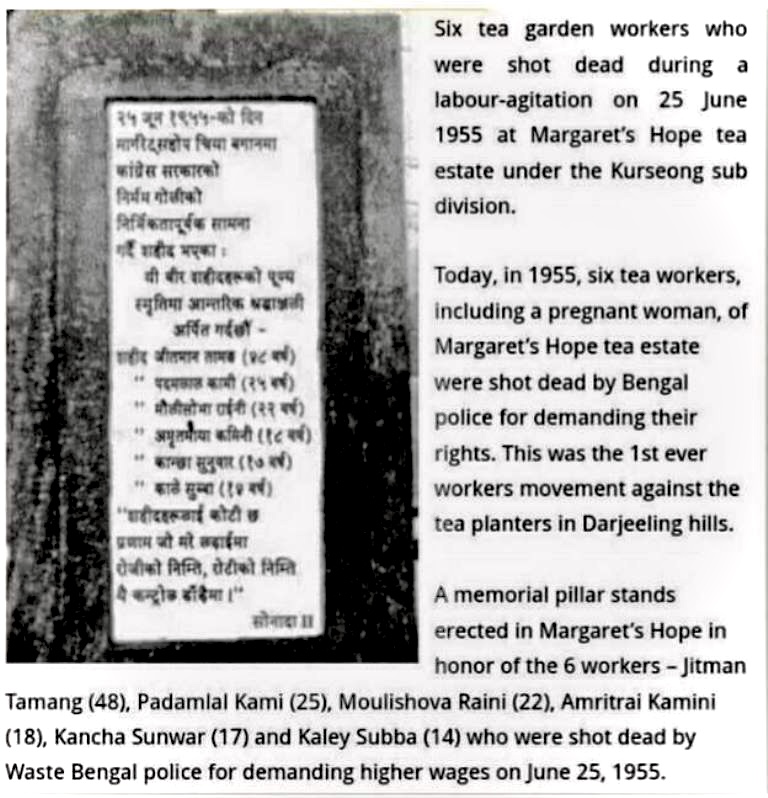
Even after 77 years of India gaining independence, the plight of the tea plantation workers continues to be overlooked and dismissed. Tea plantation workers continue to face injustice in the form of discriminatory practices such as lack of land ownership, abandonment by high management, non-payment of wages and bonuses, and abject infrastructural support.
Nepali Identity in India
The defining moments of Ratanlal Brahmin's political career were when he was elected as a Member of the Legislative Assembly in 1946 and a Member of Parliament in 1977 as a representative of Darjeeling. In 1946, Dambar Singh Gurung of the ‘Akhil Bharatiya Gorkha League’ won a monumental victory from the General Constituency of Darjeeling, while Maila Bajae won a Legislative Assembly seat from the labour constituency of Darjeeling in the Bengal Provincial Elections.
Another interesting anecdote from the book speaks about Maila Bajae’s first day at the Vidhan Sabha, it highlights the precarious socio-cultural conundrum faced by Indian Nepali citizens. On the day of his oath-taking, Ratanlal Brahmin headed to the Vidhan Sabha accompanied by his comrade Jyoti Basu, donning his cultural attire the daruwa suruwal and birkhey topi with the khukuri tucked at his waist. He was rudely reprimanded by the guard for carrying a weapon, after which a verbal tussle ensued. The author writes, “The other representative (Dambar Singh Gurung) of the hills finally clarified that the Rana Regime and the British had an agreement by which Indian Gorkhas had the right to take khukuri as part of their costume”. To this Maila Bajae replied, “Do I owe the right to wear this khukuri to a Rana, where he permits and we comply, I will not wear my khukuri henceforth”.Later that day, he was not allowed to take the oath in his mother tongue Nepali, after Sri Damber Singh Gurung clarified that Ratanlal Brahmin also knew Hindi.
Perhaps, it is this bewilderment that lives on in the descendants of people who faced multifold discrimination and social marginalization even as the Indian subcontinent metamorphosed from numerous monarchies to a democratic nation. As borders were delineated, old identities adapted to new circumstances emerging as new cultural beings with renewed political needs and the same hope for social inclusion.
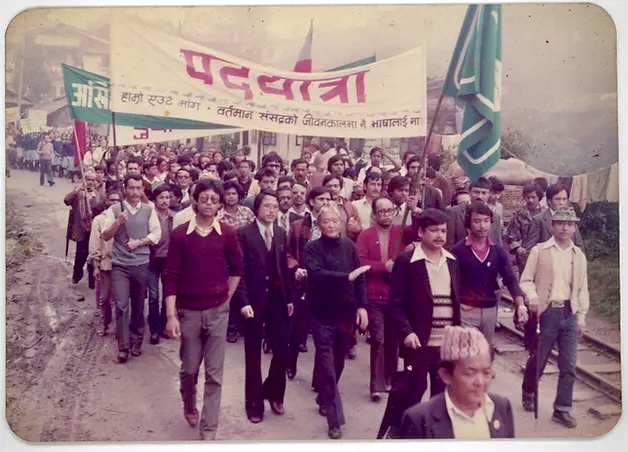
In 1961, the ‘All India Nepali Bhasa Manyata Samiti’ was formed with Sri Indra Bahadur Rai as its founder secretary (Roy, 2012). The same year, the ‘West Bengal Official Language Act’ was passed in West Bengal recognising Nepali along with Bengali as the official language for the three hill subdivisions of Darjeeling district(Darjeeling, Kalimpong, and Kurseong).
After Maila Bajae won the 1971 Lok Sabha elections from the labour constituency, he was again barred from taking his ministerial oath in Nepali. His subsequent memorandum followed by a private member bill for the recognition of Nepali as an Indian language garnered significant support. In 1977, the ‘Communist Party of India(Marxist)’ adopted the resolution to include Nepali in the eighth schedule of the Constitution. Maila Bajae also met the then Chief Minister of Sikkim, Sri Nar Bahadur Bhandari in Gangtok in 1986.
In 1992, forty-six years after Maila Bajae was barred from taking his oath at the Vidhan Sabha in his mother tongue, the Nepali language after a long struggle was finally included in the 8th schedule of the Indian Constitution with the passionate efforts of Smt. Dil Kumari Bhandari(then Member of Parliament from Sikkim) and many others.
Political Differences: Being Villainized
As the bells of Indian Independence rang in 1947, the Darjeeling District Committee of the ‘Communist Party of India’ submitted a memorandum to the Constituent Assembly on 06.04.1947 stating, “after making necessary revisions of the existing boundaries, the three contiguous areas of Darjeeling District, Southern Sikkim, and Nepal be formed into one single zone to be called Gorkhasthan”. This proposal to separate Darjeeling from newly independent India sowed seeds of fallout between the CPI in Darjeeling and the Gorkha League, who under Damber Singh Gurung was in favour of Darjeeling’s inclusion with the state of Assam and later under Randhir Subba for a separate provincial legislature combining Darjeeling, Jalpaiguri, and Cooch Behar (Lama,2009).
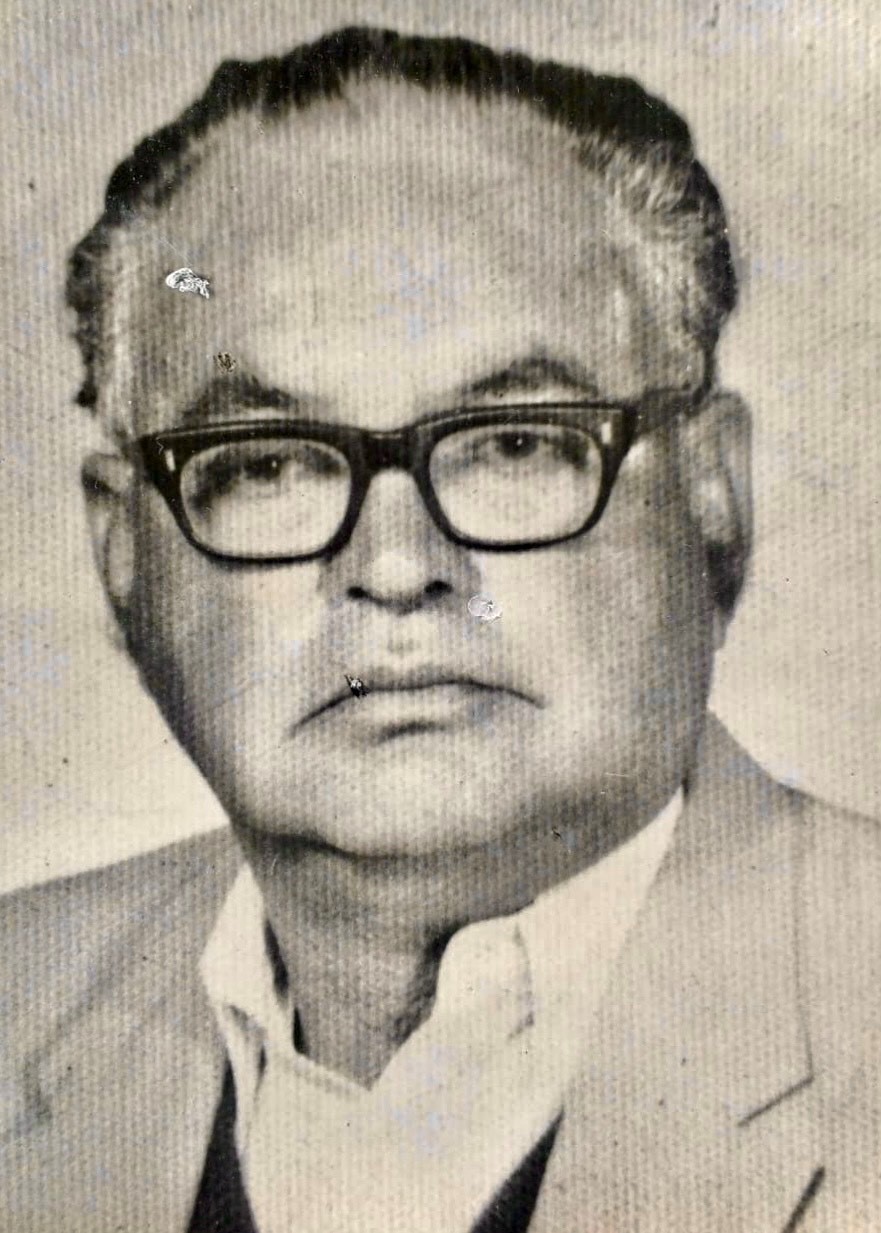
Courtesy: Preeti Brahmin
In February 1948, the Communist Party of India under the General Secretaryship of B.T. Ranadive adopted the “Programme of Democratic Revolution ''. The CPI was banned in India from 1948 to 1952, and many red cadres including Sri Ratanlal Brahmin were jailed for their affiliation. In 1967, the newly formed CPI (M) adopted a resolution in the Bengal State Assembly to demand regional autonomy for Darjeeling District (Roy,2012). Maila Bajae’s confidante Jyoti Basu, became the Chief Minister of West Bengal in 1977. The author writes, “The Communist Party favored the idea of regional autonomy to complete statehood but this idea wasn’t addressed with sincerity when they came into power in the state.”
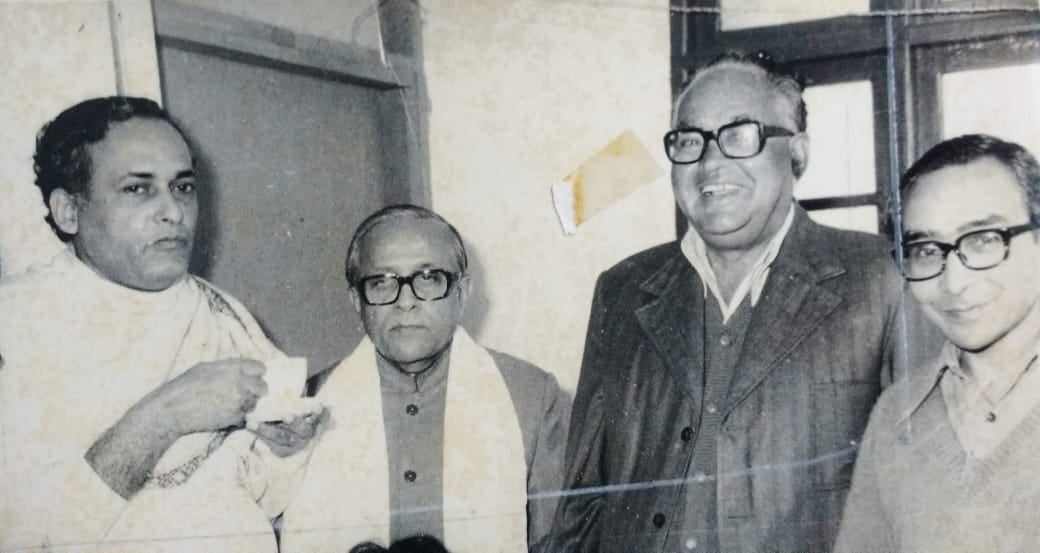
CPI (M)’s role as the ruling State Government during the ‘Separate Statehood movement of 1986’ remains a dark blotch in the memory of many people of the region even today. The political movement led to a violent period of chaos which caused further embitterment between the populist Gorkha National Liberation Front (GNLF) and the ruling CPI(M) in West Bengal, resulting in multiple killings on both sides. What was most notable about these violent clashes was that on both sides Gorkhas fought each other resulting in casualties (Roy, 2012).
Reconciliation and Reflection
The memoir’s most evocative moments are the author’s childhood recollection of the arson in her grandfather’s home at Singamari. Her vision of a verdant landscape and camaraderie was suddenly broken by the violence of elders that she probably knew nothing of then. Ratanlal Brahmin passed away in 1989. In Darjeeling, his political rivals forbade people from paying their respects. Despite this, the grounds of ‘Gorkha Dukha Niwarak Sammelan’ were filled with garlands, signifying his importance in the hearts of many people.
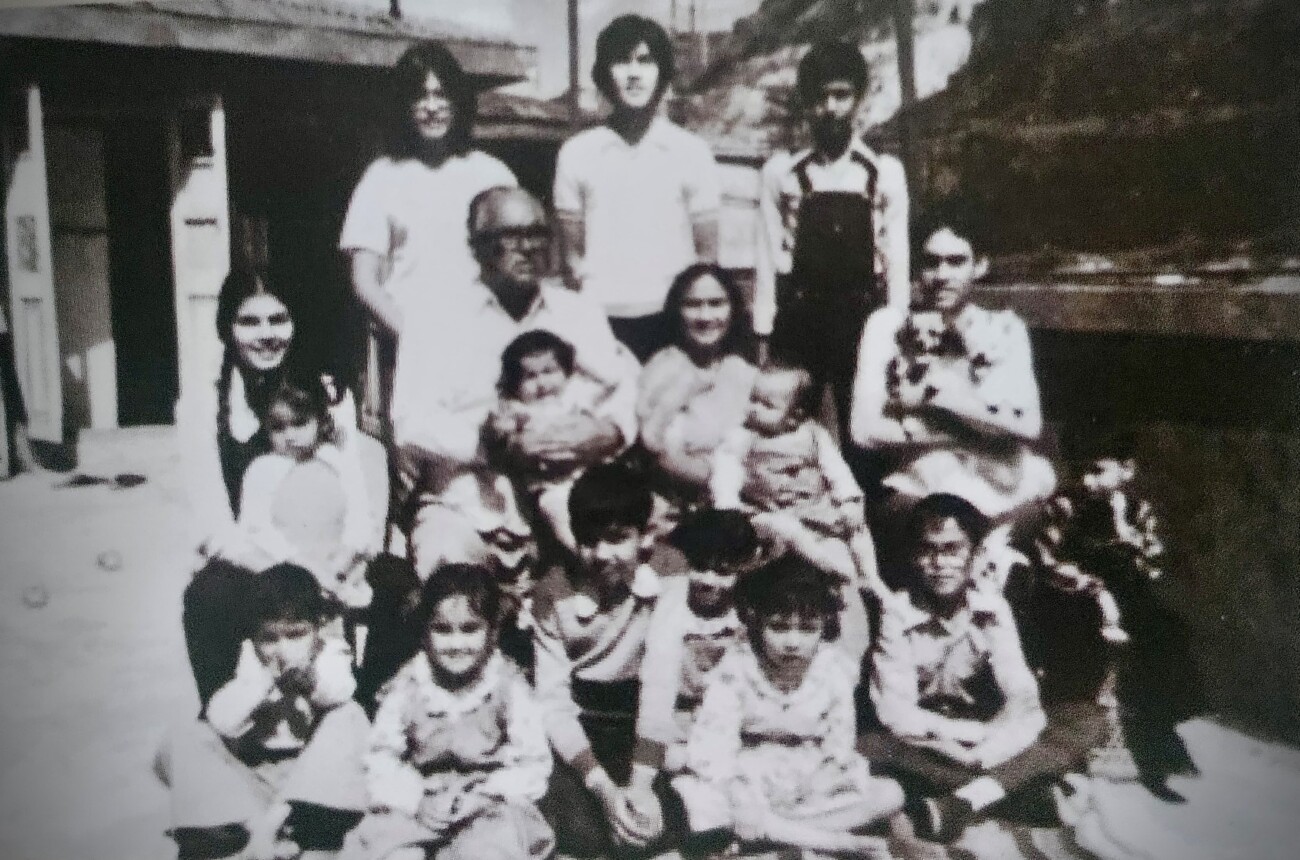
The 20th century was a time when new ideologies engulfed the world seeking a brighter tomorrow. But many pioneer leaders of yore didn’t live to witness the aftermath of their social experiments, economic exploits, and political ambitions. Our ancestors might not have had the answers to the entanglements that still haunt us and might not have been able to leave us with an egalitarian society, but perhaps they only sought to build a secure future for their descendants.
References
- Brahmin, P. (2021). Ratanlal Brahmin, The Red Lion of the Hills.
- Biswas, S. & Gurung, S. (2011). Chakhlagdo Kuro: Biteka Kehi Aanandit Anubhutiharu. Smt. Chumki Biswas.
- Roy, B. (2012). Gorkhas and Gorkhaland. Parbati Roy Foundation.
- Lama, B. (2009). The Story of Darjeeling: The Land of the Indian Gorkha. Yonzone Lama Publications.
Interview with Preeti Brahmin
(author of ‘The Red Lion of the Hills’ and granddaughter of Ratanlal Brahmin)
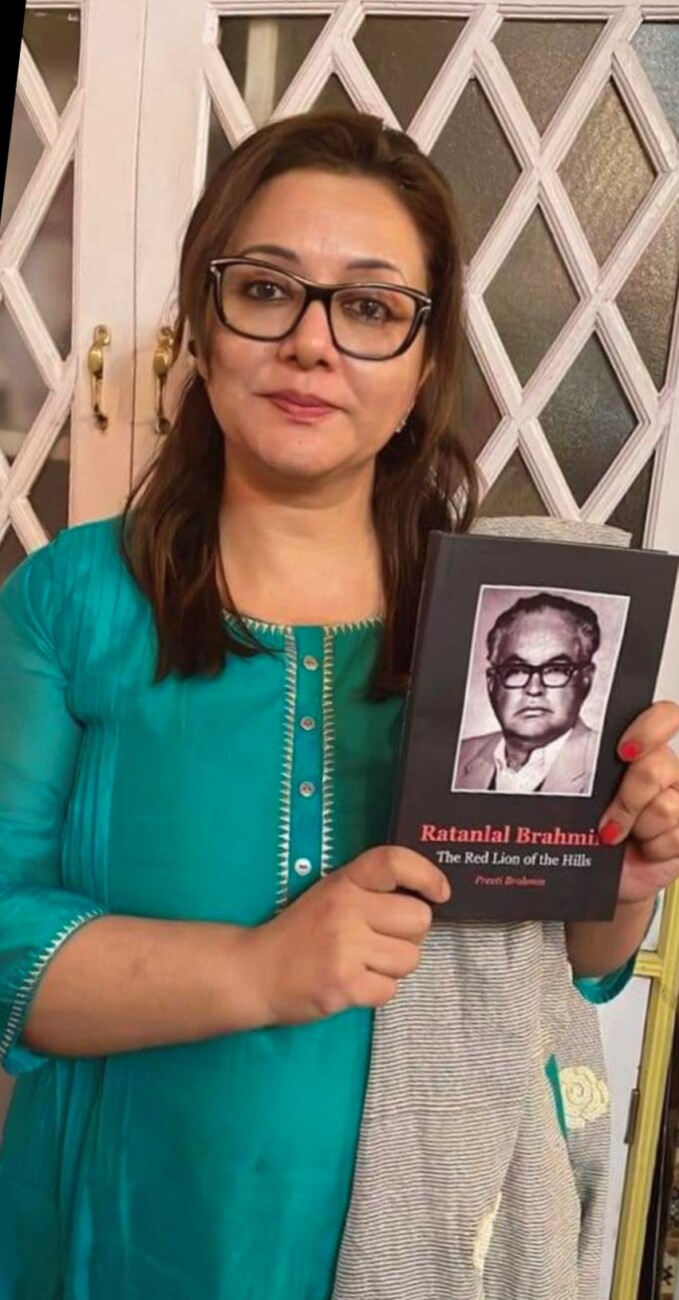
Courtesy: Preeti Brahmin
S.S- What was your main intention behind writing this book? When did you begin writing it?
P.B: To be honest, I hadn't thought of writing any prose work seriously until I was encouraged to document the life of my grandfather by a journalist friend. That got me thinking, and then dreaming and imagining how the book could be a possibility. I've been working in government schools and dealing with the underprivileged lot in our community for over 22 years. My area of service made me ponder about the work my grandad had done for the deprived and exploited people. I was reminded of him time and again while working in the Dooars and Siliguri. Another colleague pointed out that very little information was available on him on the internet, with hardly anything written about him in English. There was also a great tide of negative opinions regarding his political stand. I then started doing some research in 2016, materials poured in once I began requesting family and friends for information on him. I intended the book to do justice to his sacrifices. I felt he had been extremely courageous before joining the CPI, this character trait remained throughout his life. His honest passion was fascinating to me. So, with the sole intention of telling the world about his integrity towards his beliefs, I began typing in October 2016 during my Puja break from school.
S.S. How was the experience of reliving the memories you shared with your grandfather?
P.B: Actually, the only truly happy time of my childhood was the days spent largely with Grandad and Grandma. After his demise and when we lost our home to arson, my parents had a difficult marriage that put us, the children in a vulnerable spot. Unconsciously to counter any sadness, I would constantly revisit the old days of happier times with the joint family. So finally reading up a lot on him made him more alive in my memories.
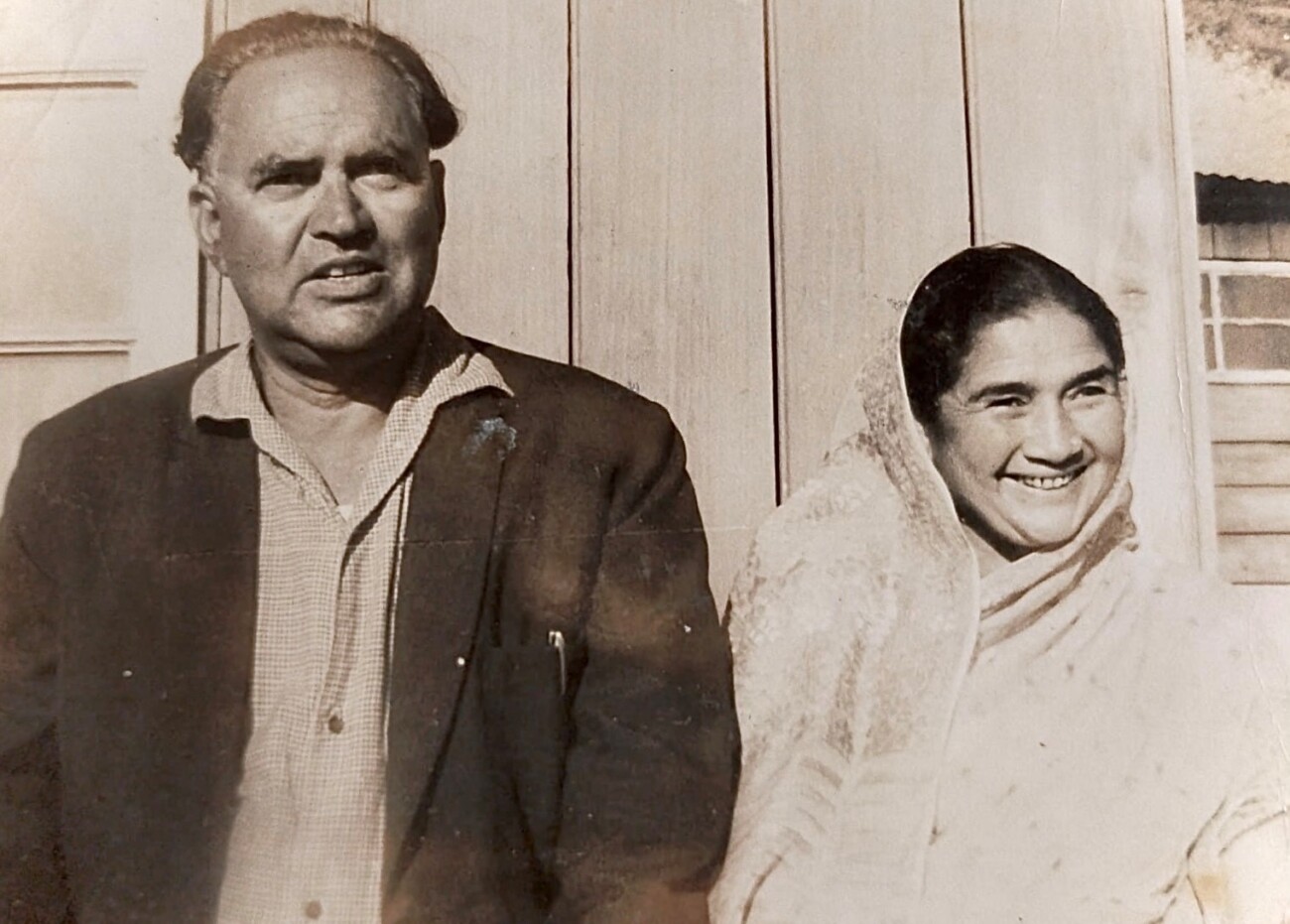
S.S. How did it feel to put out your personal experiences in the public domain?
P.B: I've written only as much about my personal life and experience as was required to reflect some aspects about Grandad. So, I wasn't uncomfortable in any way. The larger cause mattered after all. I now feel I could have put in much more about not only my experience but other family members too.
S.S. What do you believe is the legacy of Maila Bajae? How do you think he would have liked to be remembered?
P.B: Your legacy, they say, is not what you leave behind materially but what you leave people feeling behind you. If the downtrodden have felt the courage to speak out and demand their right to live with some dignity, that is the legacy he has bequeathed them. He was the first person to start labour unions in the hills for an array of workers. Though he was uneducated, he sought to enlighten college students on taking the path of sacrifice and courage for the sake of others. His contribution to altering the fabric of an unequal society into a more tolerant and happier one is his legacy. He would have liked to be remembered as a friend of the have-nots.
S.S. Do you think the political leaders treat their opposition unfairly?
P.B: I guess nothing in politics should be taken personally. Just as nations have no permanent friends or foes, similarly politicians don’t have lasting friends or foes. In Grandad’s case, his political foes were blind to his earlier contributions to society's community-building work. This, I feel is extremely sad.
S.S. Do you think Maila Bajey could have better fulfilled his mission for social justice through another party if not the CPI?
P.B: Well, since Maila Bajey has always maintained that it was not he who fit the party but that the party fit him, it had to be the CPI for him. He was very much aware of the existing Congress party in the hills, but their activities were too inconsequential to attract him. Moreover, the Congress leadership would not have permitted his style of challenging authority. Other hill parties were barely existent in 1943. The CPI suited his rebellious nature. He believed that was the party to ring in a better tomorrow for everyone by their disciplined revolution.
S.S. We have read about your good work as a teacher. Please tell us more about how you hope to carry forward the legacy of your grandfather's vision.
P.B: I honestly never see myself as carrying forward his vision as his scope was so much wider than mine. There is of course a leaf I've taken from his book and used it to protect the school I am posted at right now. People had called him ‘Robin Hood’ once for taking from the rich to give to the poor. Inadvertently, I'm also resorting to seeking help from the affluent to ensure a complete set of teaching staff for the children of my school. Not only the affluent but anyone with a big heart has contributed here including my friends, family members, and our permanent staff.
I've been compelled to seek this help for the last eleven years (since 2013). Although I passed the SSC exam for Headmistress in 2019 and was due to take a posting in Birpara Nepali High School as Headmistress, I did not go owing a moral responsibility to my present school. There were very few graduates in my school’s locality when I joined in 2009. None were from math and science fields, because there was no Nepali medium higher secondary school offering science in either Khoribari or Naxalbari block. Children could not afford to go to Siliguri. Today, the situation has changed. We coach our children to win scholarships while in class VIII. Some of them get through and get a good amount for four years, this helps them bear the cost of their higher education to some extent. But more importantly, the parents are now thinking of somehow investing in their children's future. Earlier, they were expected to study only till the 10th and join some work. Our dropout rate has decreased. We had 90 students in 2013 and are now above 300. Many students are now studying in other fields besides humanities. This year an ex-student from the locality joined our school as a math teacher in the elementary section(v to viii). Our old math teacher who had been with us for four years was from Mirik, and we had to look after his boarding and ration perks to urge him to come and teach in our school. So, finally, a local boy joining us as a qualified math teacher is a big triumph. We have been arranging for online coaching packages for NEET and JEE aspirants since last year, teaching them to dream. In 2023, 15 students (5 onstage and 10 offstage)were also awarded scholarships of Rs 10,000/- each by the Telegraph Educational Foundation for their good results. Since we were upgraded to high school status in 2019, each Madhyamik Pariksha batch has been 100% successful. This year, our school student topped among all the Nepali students of Siliguri and the Dooars. Despite the challenges, we are trying our best. We are hopeful for the future because our next class X batch has a higher number of students than that of last year, we are trying to cater to them in a special way. This is how we are progressing the school.
Simran is a freelance writer from Darjeeling. Her writings have previously been featured in The Pomelo, The Darjeeling Chronicle, and Brown History. She runs कथाkokatha, an independent blog seeking to explore and document written narratives of the Eastern Himalayan region, particularly of Darjeeling and Kalimpong.
I am grateful to Preeti Brahmin Ma'am, the author of ‘The Red Lion of the Hills’ for her assistance in putting this article together. I am also grateful to the Project Sikkim Team for this opportunity and their patient editorial support.
One comment on “THE LEGEND OF RATANLAL BRAHMIN”
Leave a Reply
Latest Posts
Latest Comments
No 'Comments_Widget_Plus_Widget' widget registered in this installation.


Hmm it seems like your blog ate my first comment (it was
super long) so I guess I'll just sum it up what I
had written and say, I'm thoroughly enjoying your blog.
I too am an aspiring blog blogger but I'm still new to the whole thing.
Do you have any tips for newbie blog writers?
I'd definitely appreciate it.